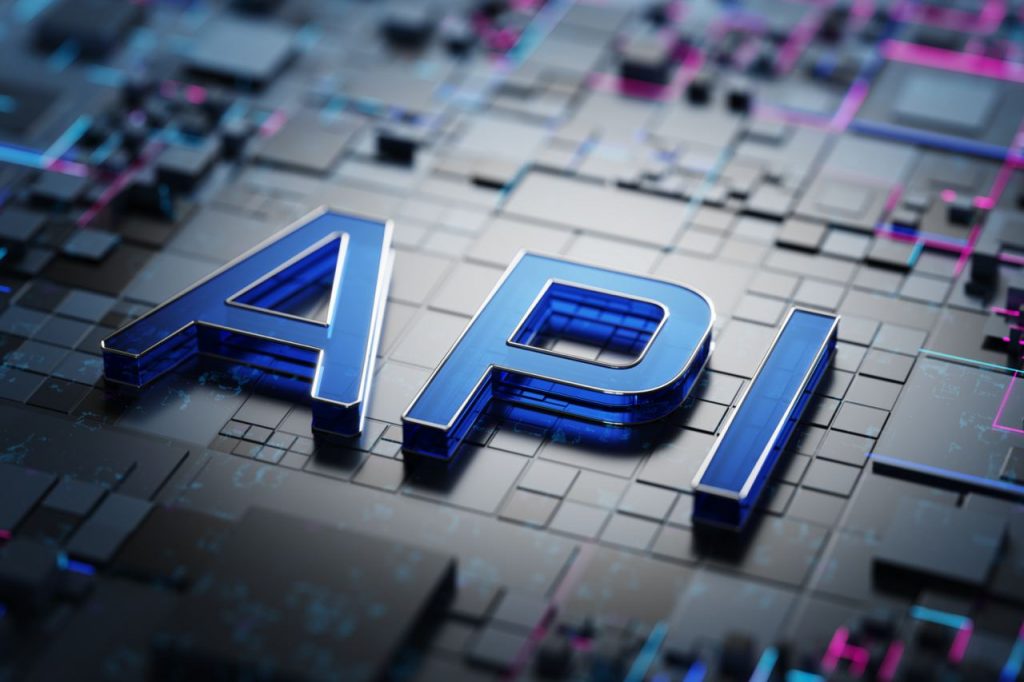
The world of payments is rapidly evolving, and one of the critical drivers of this change is the use of APIs and blockchain technology in the payment processing system. APIs facilitate data flow between payment providers, merchants, and consumers.
While Blockchain, on the other hand, is a distributed ledger technology that provides a secure and transparent way to record and verify transactions. Blockchain can transform payments, making them faster, cheaper, and more secure. It eliminates the need for intermediaries, reducing transaction costs and increasing efficiency. But that’s not all, and there are many things you should know about APIs and blockchains in payment processing.
Here we will explore the use of APIs and blockchain technology in payments, their advantages, and how they can be leveraged to create a blockchain payment system. We will also discuss the potential of Blockchain to be the future of payments and the top blockchain providers in the market.
Brief statistics:
- The global API management market is expected to grow from $1.2 billion in 2020 to $6.2 billion by 2025.
- The global digital payments market size is expected to reach $132.5 billion by 2025
- Blockchain in the payment market is expected to reach $1.6 billion by 2026.
APIs and Their Working
API stands for “Application Programming Interface”. If we define this in simple words, then it is a set of protocols, routines, and tools for building software and applications. This interface mechanism allows you to use different software systems and let them communicate with each other.
Making it simple, we can say that it is just like a messenger (like WhatsApp), which lets different applications share data and functionalities.

How do APIs work?
The APIs enable communication between machines, computers, or applications by following predefined rules. As an intermediary between the two, APIs facilitate tasks and interactions by delivering data from one system to another.
According to ProgrammableWeb, there are over 25,000 APIs available for developers to use. In simple words, think of a restaurant scenario. When you place an order, the waiter acts as the API, taking your request and conveying it to the kitchen staff, who then prepare your food. Once ready, the waiter delivers the food back to your table.
Without the waiter, it would be challenging to coordinate and complete the process.
In the same way, APIs are critical in establishing communication between systems, applications, or machines. At FSSP we help our clients with building Fintech solutions from scratch and also we can guide you in having more APIs for existing fintech apps and projects.

Type of APIs
There are many types of APIs out there that you can use to make web services more efficient. But there are four common APIs: public, partner, private, and composite.
- Public APIs: These types are available to anyone using them. We can say that these are open source. API. These APIs are particularly useful for developers who wish to create new software to access data from other sources.
- Partner APIs: These are a bit more restrictive, as they are only available to distinct partners who have agreed to specific terms and conditions. This type of API is beneficial for companies that want to work together on a project, as this allows them to share data in a secure and controlled way.
- Private APIs: Private APIs are used internally within a company, and they’re not available to the public. These APIs are particularly useful for companies that want to keep their data secure and confidential.
- Composite APIs: Composite APIs are a combination of two or more APIs. This type of API is beneficial for companies that need to access data from multiple sources, as it allows them to combine different APIs into a single, easy-to-use interface.

How are APIs used in payments?
Payment APIs are revolutionizing the way merchants and eCommerce retailers accept payments. By enabling seamless communication between various entities involved in the payment process, payment APIs ensure a smooth payment experience for the business and the customer.
With payment APIs, businesses can customize their payment processing infrastructure to meet their needs. This allows for a more efficient and streamlined payment process, ultimately increasing sales and customer satisfaction.
Additionally, payment APIs are easy to integrate with existing software and mobile apps, making it simple for businesses to add payment processing capabilities to their existing systems.
We can say that payment APIs are a game-changer for businesses looking to improve their payment processing capabilities. By enabling seamless communication and customization, payment APIs are helping companies to provide a better customer payment experience.
Payment API Features
When we talk about APIs Payment features, there are a lot. For now, let’s discuss a few of them:
- Seamless integration: Payment APIs offer easy integration with existing software and mobile apps, allowing businesses to add payment processing capabilities quickly and easily.
- Enhanced security: Payment APIs offer enhanced security features, including encryption and fraud prevention, to ensure that transactions are secure and protected.
- Real-time processing: Payment APIs enable real-time processing of payments, providing customers with instant confirmation and reducing the risk of chargebacks.
- Multiple payment options: Payment APIs offer support for various payment options, including credit and debit cards, e-wallets, and other payment methods, allowing businesses to cater to a broader range of customers.
- Payment data management: Payment APIs give businesses access to detailed payment data, allowing them to analyze transaction data, manage payment disputes, and track payment trends.
- Scalability: Payment APIs are designed to be scalable, allowing businesses to handle increasing volumes of transactions as their business grows.
- User-friendly interfaces: Payment APIs offer user-friendly interfaces that make it easy for businesses to manage payment processing and access payment data.
- Cost-effective: Payment APIs can be more cost-effective than developing custom payment processing systems in-house, as they offer pre-built. These customizable solutions can be integrated quickly and easily.
API in Digital Payment
APIs (Application Programming Interfaces) are an essential component of digital payments. They enable different systems to communicate and exchange data, facilitating secure and efficient transactions. Moreover, the payment providers allow connecting with merchants and other payment processors, ensuring seamless payment processing across multiple platforms.
Blockchain in Payments
Blockchain technology is a decentralized, secure, and transparent digital ledger that can be used in various industries, including payments. The research said that using blockchain in cross-border payments can reduce transaction costs by up to 60%.
Blockchain technology can be used in payments in various ways. It enables peer-to-peer transactions without intermediaries, reducing transaction costs and processing times. Blockchain can also facilitate cross-border payments, enabling faster and more cost-effective transactions.
Creating a Blockchain Payment System
Creating a blockchain payment system can seem daunting, but with careful planning and execution, it can be a rewarding endeavour. Here are the steps to take when building your blockchain payment system:
- Determine the type of blockchain you want to use: The first step is to decide what kind of blockchain you want to use, whether public or private, permissioned or permissionless. Each type has its unique characteristics and use cases.
- Identify the payment channels: You need to identify the channels you want to support in your blockchain payment system, such as credit card payments, cryptocurrency payments, bank transfers, etc.
- Choose a consensus algorithm: Your blockchain payment system needs to have a consensus algorithm that verifies and validates transactions on the blockchain. There are many consensus algorithms, including Proof of Work, Proof of Stake, and Delegated Proof of Stake.
- Develop a smart contract: A smart contract is a self-executing one encoded on the blockchain. You need to develop a smart contract to handle the payment transactions in your blockchain payment system.
- Build the user interface: You need to create an interface that is easy to use and intuitive. The user interface should allow users to send and receive payments on the blockchain quickly.
- Test the system: Before launching the blockchain payment system, you need to thoroughly test it to ensure that it is secure and functional. You can use telnet to test the system before going live.
- Launch the system: Once you have tested it, it’s time to launch it. You can start with a small user base and gradually scale up as you gain more users.
If you follow these super easy steps, you can create a blockchain payment system that is secure, efficient, and user-friendly.
Biggest Blockchain Providers
There are several blockchain providers in the market, each offering unique solutions and services. Here is an overview of some of the biggest blockchain providers:
- IBM Blockchain: IBM is a leading provider of blockchain solutions for businesses across different industries.
- Microsoft Azure Blockchain: Microsoft Azure Blockchain platform offers a range of tools and services that allow businesses to build, deploy, and manage blockchain applications with ease.
- Amazon Web Services (AWS) Blockchain: AWS offers a range of blockchain services that allow businesses to develop, deploy, and manage blockchain networks and applications
- Ripple: Ripple is a blockchain provider that offers payment solutions for financial institutions.
- Ethereum: Ethereum is a decentralized blockchain platform that enables developers to build and deploy decentralized applications (dApps). It is widely used for developing smart contracts and tokens.
Each provider has its unique strengths and offerings, and businesses should carefully evaluate their options before selecting a blockchain provider that suits their needs.
Conclusion
Ultimately, there is no doubt that APIs and blockchain payments are two powerful technologies that can revolutionize how we make transactions and conduct business. APIs enable seamless integration of different systems and applications, making it easier for companies to implement blockchain payments into their existing processes. On the other hand, blockchain payments offer secure, fast, and cost-effective transactions that can significantly benefit businesses and individuals.
As the technologies continue to evolve and mature, we can expect to see even more innovative solutions and use cases emerge in the years to come. And if you are looking for any help related to Banking and Fintech industry, as well as with WEB3 and Blockchain, speak to our expert and we will guide you in any of your challenges.



